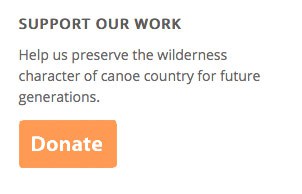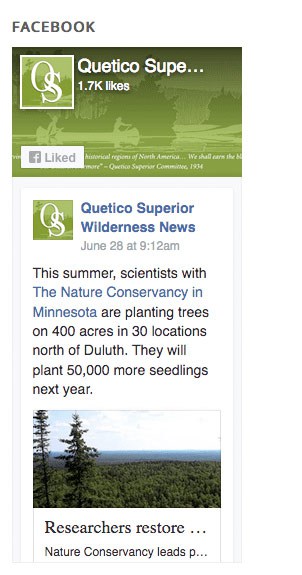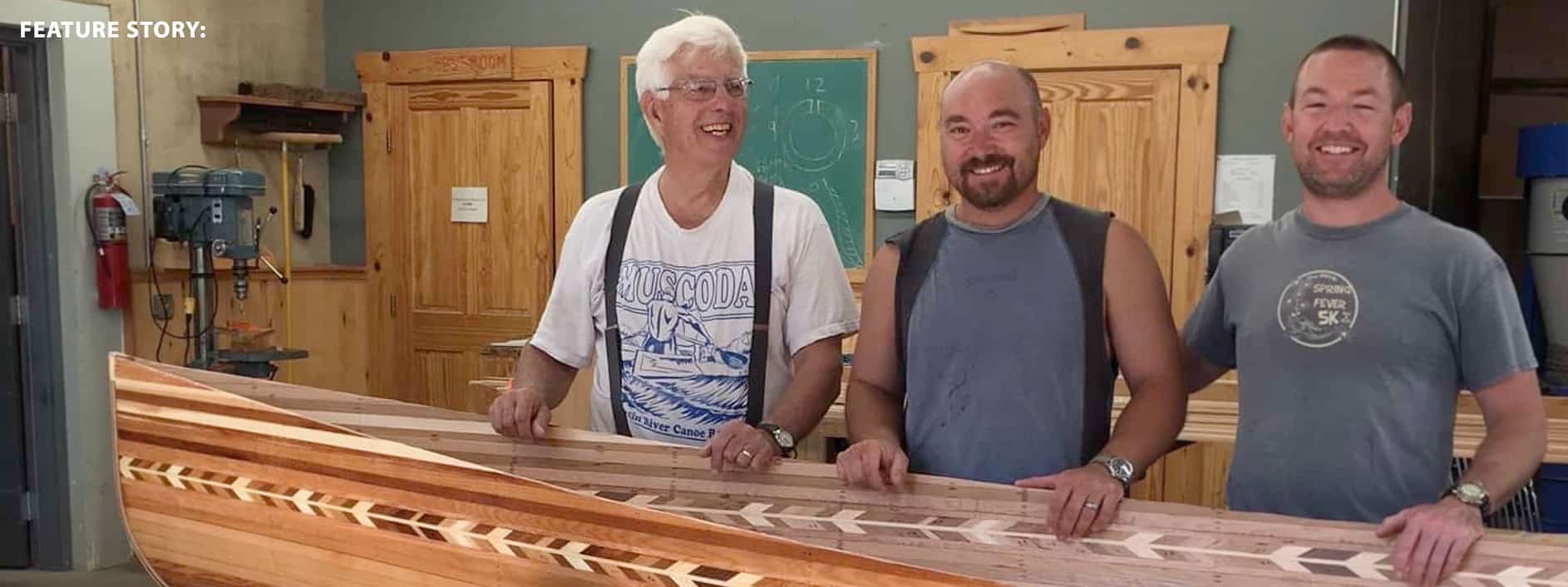
by Alissa Johnson
There is a sense of anticipation before any wilderness canoe trip begins. The route is planned, the packs are full, and the canoes are loaded. Everything possible has been done to prepare, and yet the unknown outweighs the known. Will the group get along? Will the weather cooperate? How about the portages? For those who are new to wilderness tripping, it’s a moment of wondering what, exactly, they have just begun.
In many ways, that same sense of anticipation is apparent when canoe builder Ken Koscik describes the classes he teaches. Groups of five to eight individuals or pairs like fathers and sons come together at North House Folk School in Grand Marais, Minnesota, to build wood strip canoes over 7 to 11 days. At the beginning, Ken points to a canoe hanging in the rafters and says, “We’re going to build that.”
Some students shake their heads. Some don’t believe it. He reassures them: it’s easy. “I have told hundreds of people that if you can tie your shoes, you can build this canoe. And that is the truth,” he says.
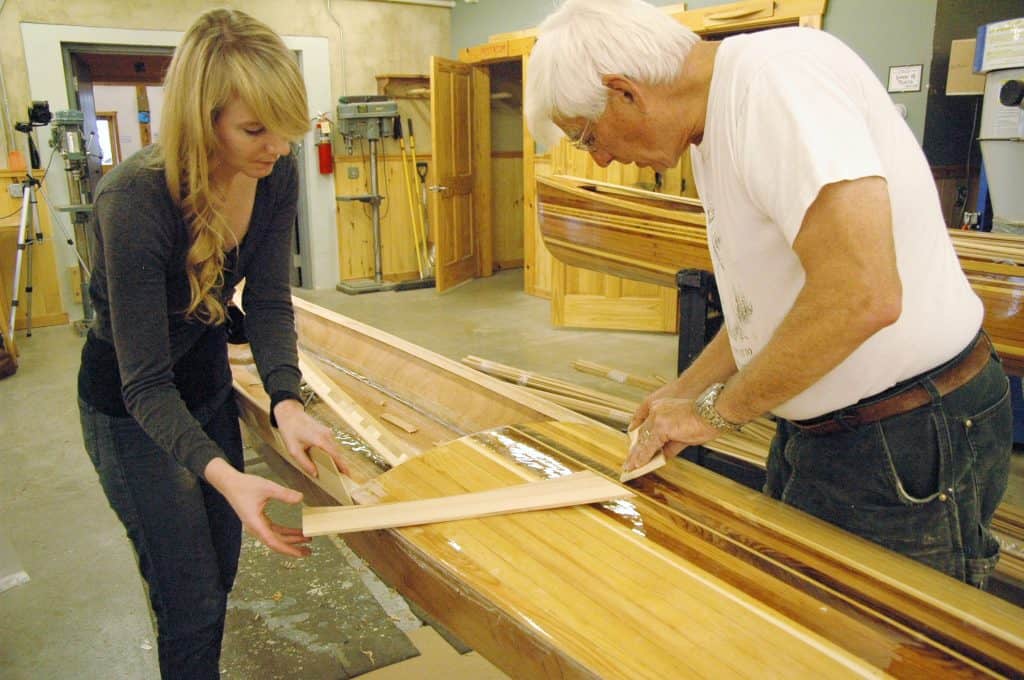
Though the process is simple, Ken is careful to orient the class before they begin. He walks them through the process—first, they’ll set up the strongback, then they’ll put the templates in place—and teaches them the language of the canoe and of building.
“There are words that we use: that’s a little proud on this end and what does that mean? It’s a little longer than it needs to be or a little higher than it needs to be,” he explains.
At 76, Ken estimates that he’s been involved with about 80 canoe-building projects. He built his first canoe at the age of 25, borrowing a design from Popular Mechanics. It had a Styrofoam core and weighed 110 pounds at 16 feet long.
“It floated like a big bathtub, but it was really stable and when I was 25 years old I could lift 110 pounds onto a truck by myself,” he jokes.
His wilderness trips are almost as plentiful as his canoe building. He’s visited Quetico Provincial Park 75 times in the last 49 years, sometimes three trips a year. He’s made the traverse from Beaverhouse Lake to Cache Bay three times, done the Hunter Island Loop and his license plate reads QUET1CO. He safeguards his time on the water by making it a priority: every year, he pulls out a calendar, draws a line through the days he wants to paddle, and unless there’s a wedding or a funeral, goes on that trip.
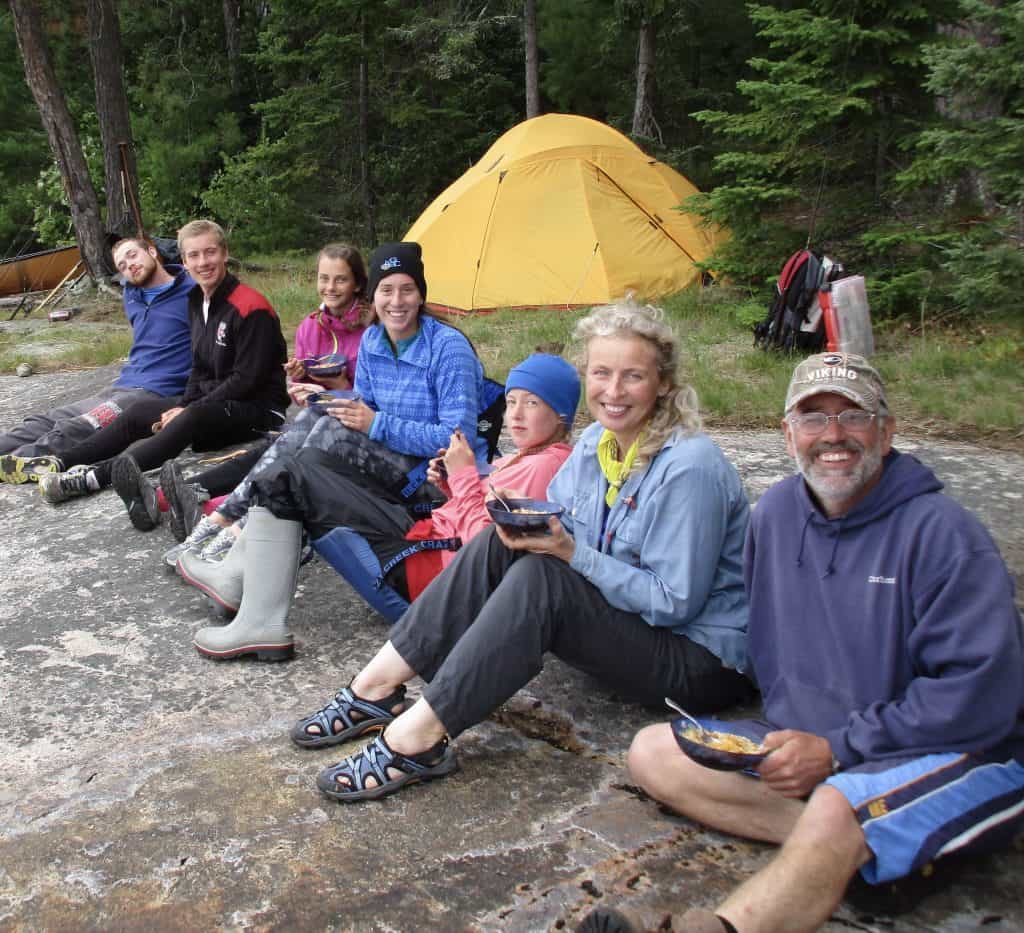

For Ken, it seems, there is a beauty and simplicity to paddling a canoe he built through Quetico. “How do you tell someone who’s never been there that when you’re paddling along on a hot day and your mouth gets cottony, you can dip your cup in the lake and sip. How can you put a price on that? It’s just amazing,” Ken says.
It sounds very much like trying to tell someone that they can, no matter their experience, build a wood strip canoe. Just like a canoe trip, a building class brings together a diverse group of people, from the inexperienced to the experienced. And just like on a canoe trip, they figure things out as a group and one step a time.
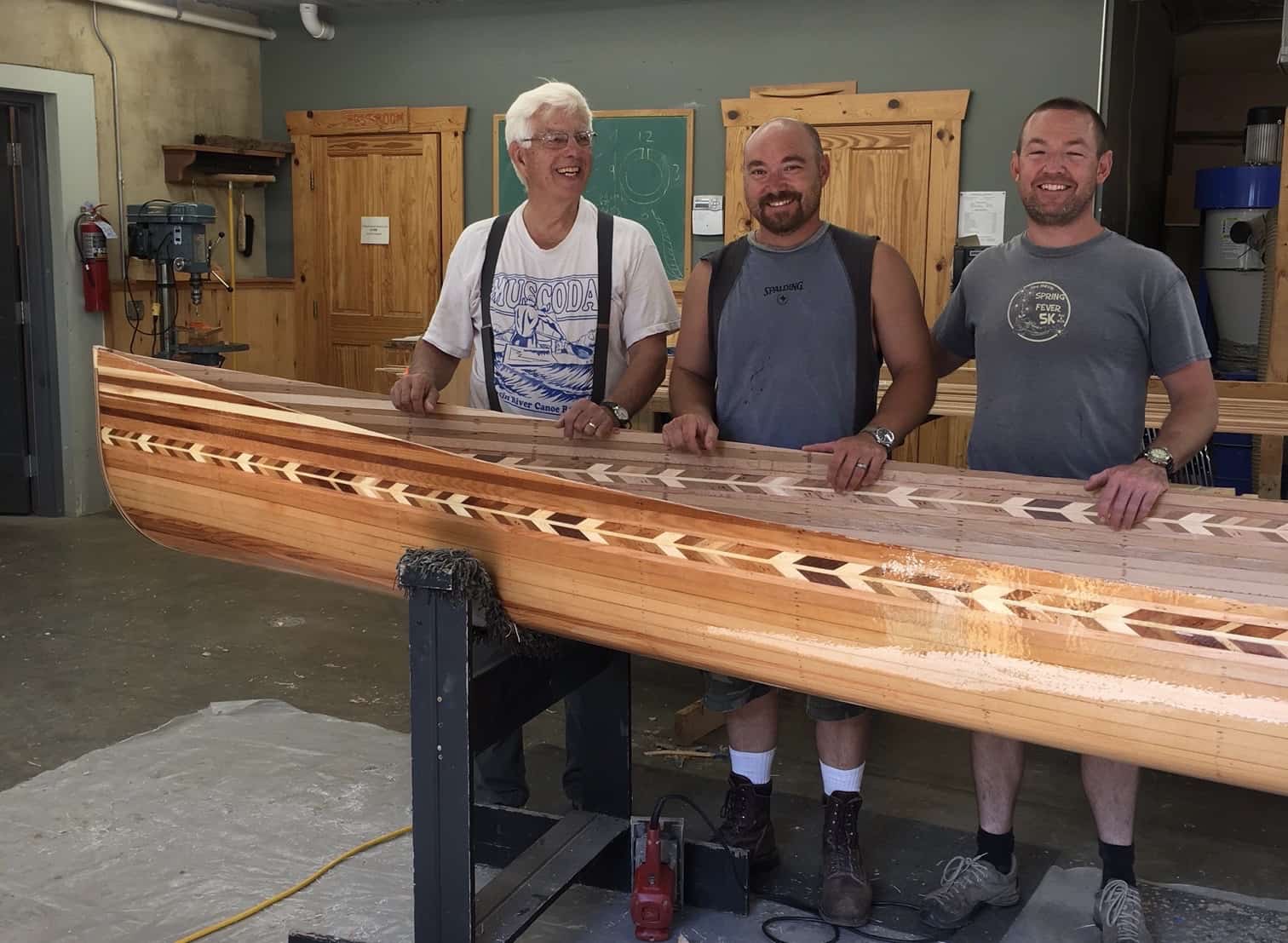
“We don’t know what kind of problems we’re going to run into, but collectively we can figure it out. Just like you don’t know how you’ll get all that gear across the portage or battle winds or windfall across the portage path, we’ll figure out a way to get through it,” Ken says.
And the process changes his students. Those who are nervous loosen up, and those who think they know it all get to try things a different way. The end result is about more than the canoe. “As a teacher, sometimes you have no idea of the impact on people’s lives,” Ken says.
One student attended class just two weeks after losing his wife and found some respite in building. Another attended his course before seeking cancer treatment only to return home and find the cancer gone.
“One guy said to me, ‘This is the best week of my entire life.’ I’m standing there saying, ‘I just helped you build a canoe.’ You have no idea the impact of giving people the opportunity to build something, what it does,” Ken says.
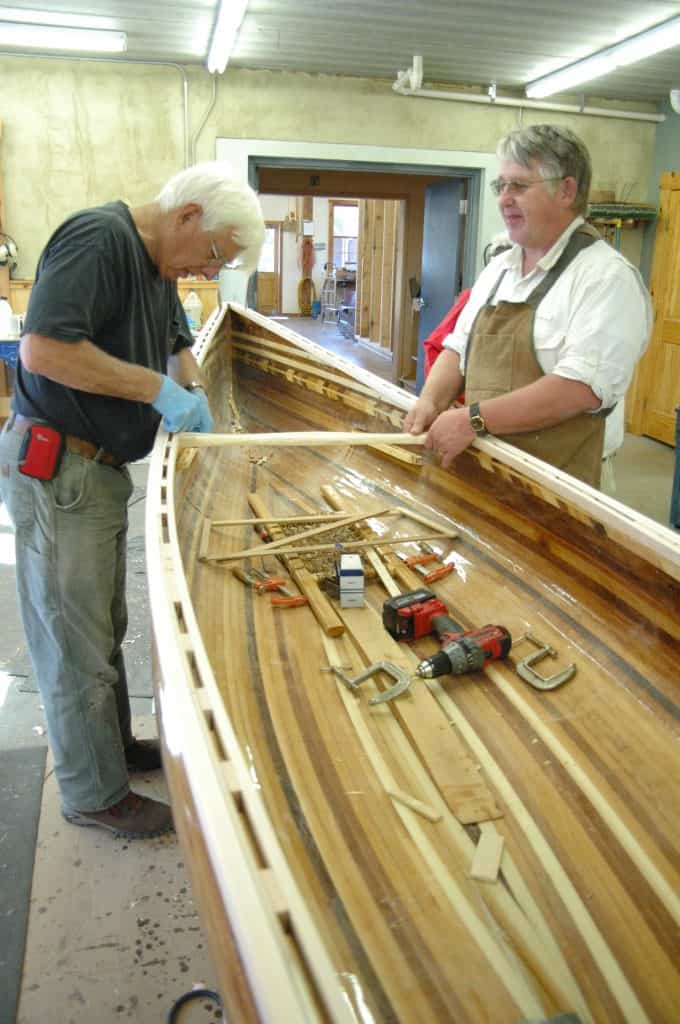
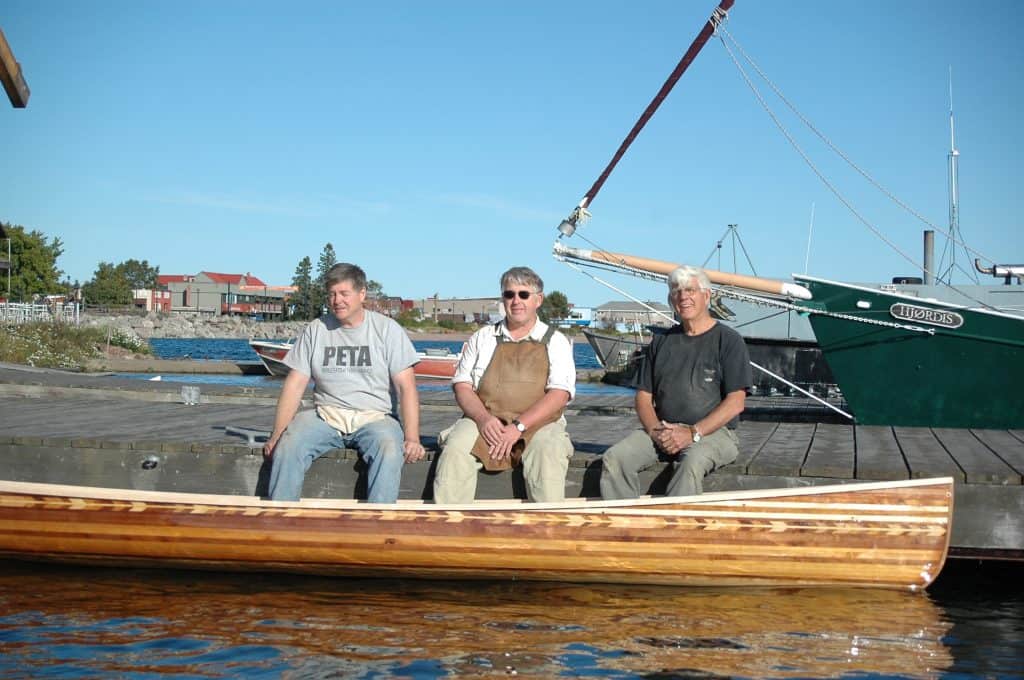
Some of his students have gone on to build canoes and donate them to auctions for charities—something that Ken has also done. He’s worked on 10 canoes and kayaks for fundraising events, many of which raised funds for organizations in his hometown of Madison, Wisconsin, including the local chapter of the Kiwanis Club, the Wisconsin Youth Symphony Orchestras and Big City Mountaineers, which mentors urban youth in the outdoors. One helped raise funds for a young boy with leukemia.
Though this penchant for donating canoes has earned him something of a reputation for generosity, Ken sees building, donating to good causes, and teaching as more of a way of life than an act of charity. The simple act of donating his first canoe to the Kiwanis Club ultimately led to the opportunity to teach at North House and even abroad in Norway. His life—just like his students’ lives—has been enriched by teaching.
“People say it must be a lot of work [to teach]… It is a lot of work, but it’s keeping me going, keeping my mind fresh,” he says.
It’s hard not to hear Ken’s story and think about the way that building a canoe embodies the wilderness experience. There’s the sense of accomplishment, the fun along the way. Learning new skills and improving over time. But most of all the sense of connection—to people, to a process, to a place. As Ken says, “You go on a canoe trip or build something with someone, you never forget that.”



